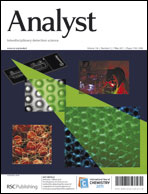Semi-targeted residue screening in complex matrices with liquid chromatography coupled to high resolution mass spectrometry: current possibilities and limitations
Abstract
Some twenty cultured fish samples were analyzed for possible residues of veterinary


 Please wait while we load your content...
Please wait while we load your content...